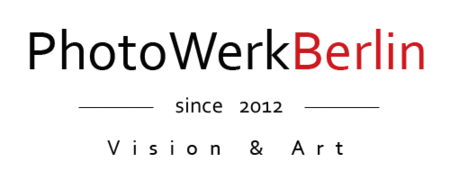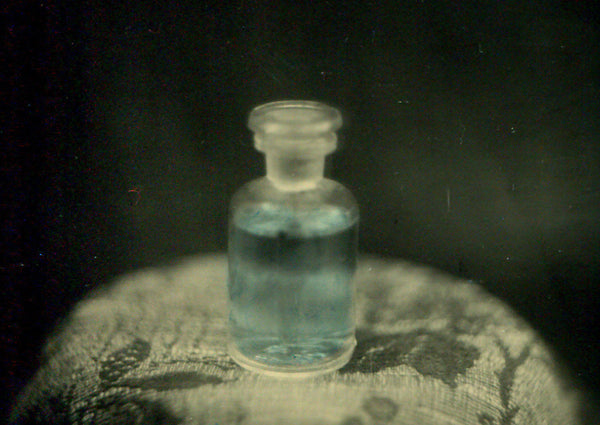
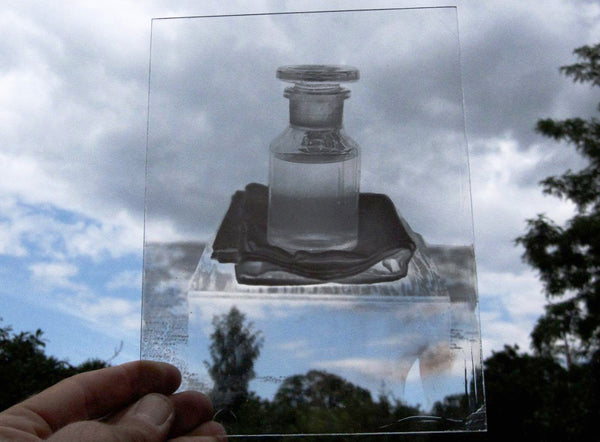
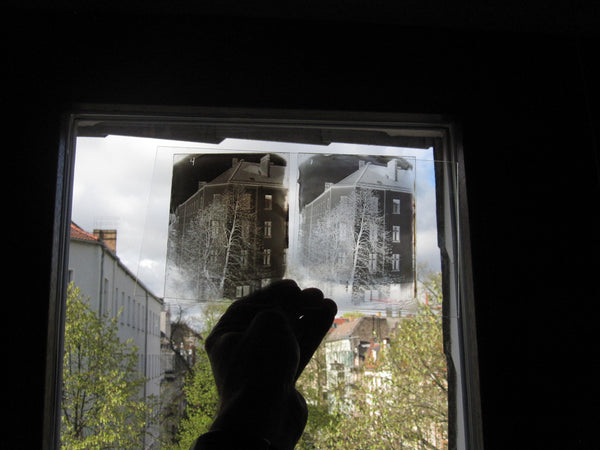

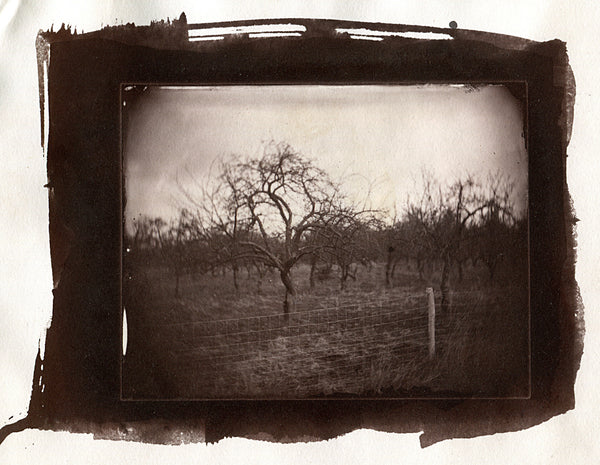
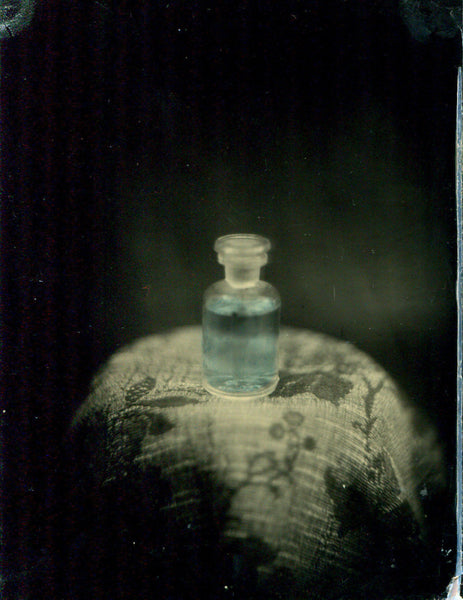
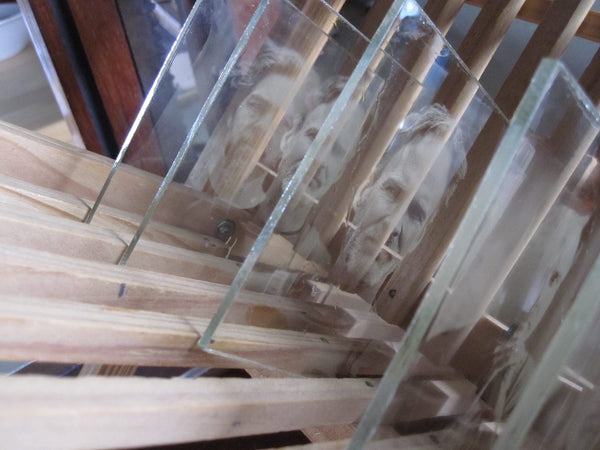
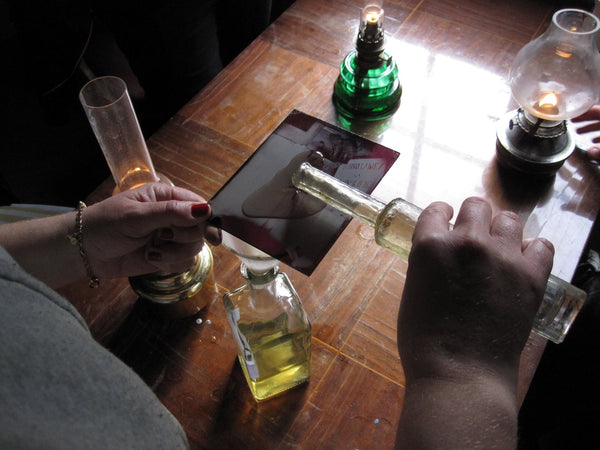
David Puntel
Advanced Wet Plate Photography
Bei Interesse schicke uns eine E-Mail an: info@photowerkberlin.com
Du hast schon Erfahrung mit Tintypes und Ambrotypien und willst einen Schritt weiter gehen? Wollest du schon immer deine eigenen Großformat Negative machen und sie auf eigenen handgemachten Fotopapier abziehen?
Nun ist es soweit. Erfahre mit uns den wunderschönen und einzigartigen Prozess von Nassplatten Kollodium Negativen und Salzdrucken.
Viele von uns kennen die konkurrenzlose Detailgenauigkeit, den Tonwertreichtum und die Tiefe von Nassplatten als Positiv-Verfahren (Tintypes und Ambrotypien). Abzüge von Nassplatten "Negativen" sind das alles und mehr. Im Workshop werden die Unterschiede in der Herstellung von Nassplatten "Negativen" und "Positiven" erarbeitet. Es werden unterschiedliche Qualitäten von Kolloidium, ferner Entwickler (Eisen gegen Pyro) und Fixier Formeln besprochen.
Darüber hinaus wird der "Negativ"-Prozess, im Vergleich zum "Positiv"-Prozess erklärt, einschließlich der Thematik der Belichtung, Entwicklung und des "Albumin-Subbing". Schließlich wird die Idee hinter den Techniken der "Wiederentwicklung" und "Intensivierung" beleuchtet und praktiziert. Gesalzenes Papier, eines der frühesten Mittel, um fotografische Negative zu drucken, lässt Prints entstehen, die mit dem Reichtum von Platin / Palladium konkurrieren. Darüber hinaus können zahlreiche Farben von Braun bis Schwarz mit verschiedenen Tonern erreicht werden. Papierüberlegungen, Expositionsmöglichkeiten (Sonne vs. künstliches Licht), Tönung, Druck "schwierige" Negative und Handwachs werden diskutiert, demonstriert und im Detail geübt.
In Deutsch und Englisch. Der Kurs ist limitiert für 4 Teilnehmer.
Mit David Puntel
21. September, 2019 | 10:00 – 18:00 Einführung in den Nassplatten Kollodium Prozess. Demonstration des Negativ Prozess. Die Teilnehmer erstellen ihre eigenen Negative.
2. Tag | 10:00 – 18:00 Besprechung der eigesetzten Chemie; Die Teilnehmer machen weitere Negative; Demonstration und Praxis der Wiederentwicklung und Intensifizierung. Salzpapierdrucke mit den Negativen.
Already experienced in making Tintypes and Ambrotypes, and ready to take your experience and skills to the next level? Or have you ever wanted to create your own large-format negatives, and print them on your own hand-crafted photographic paper?
Then join us and experience the beautiful and unique processes of Wet-Plate Collodion Negatives and Salted Paper Printing.
Many of us are aware of the unrivaled detail, tone, and ambiance that Wet-Plate Collodion "Positives" (Tintypes and Ambrotypes) render. Prints made from Wet-Plate "Negatives" do so even more. In this workshop, the differences between the creation of Wet-Plate Collodion "Negatives" and "Positives" (Tintypes and Ambrotypes) will be discussed. The different collodion, developers (iron vs. pyro), and fixer formulas will be addressed. In addition, the process to make a Collodion "Negative," as opposed to a "Positive," will be highlighted, including exposure, development, and albumen subbing. Finally, the idea behind "Redevelopment" versus "Intensification" will be demonstrated and practiced.
Salted Paper, one of the earliest means to print photographic negatives, produces prints rivaling the richness of Platinum/Palladium. In addition, numerous colors ranging from browns to blacks can be achieved with various toners. Paper considerations, exposure possibilities (Sun vs. artificial light), toning, printing "difficult" negatives and hand waxing will be discussed, demonstrated, and practiced in detail.
The workshop will be held in English and German language and is limited to 4 participants.
With David Puntel
September 20th, 2019 | 10:00 – 18:00 Introduction to the Wet-Plate Collodion Process; Demonstration of the Negative Process; Students make their own negatives.
September 21th, 2019 | 10:00 – 18:00 Discussion of Chemistry Involved; Students continue to make negatives; Demonstration and practice of Redevelopment and Intensification.Salted Paper Printing of Negatives.
===========================================
Wir bieten diesen Workshop in Zusammenarbeit mit dem Central Valley Project an.
Für Informationen zur Buchung des Workshops schicke bitte eine E-Mail an: cvpphoto@yahoo.com
We are offering this workshop in collaboration with Central Valley Project. For further information about how to book the workshop please send an email to: cvpphoto@yahoo.com
===========================================
Für die Wet Plate Workshops stellt uns die Firma Franalog Kollodium und andere wichtige Hilfsmittel für Ambrotypien und Ferrotypien zur Verfügung.
Mehr dazu findet ihr hier: www.edeldruckshop-franalog.eu
